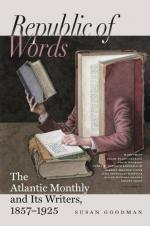Not only is this permitted,—it is demanded. It is a law through which alone success is attainable. In obedience to it, Mr. Page adopts a key somewhat lower than that of Nature as a point of departure, using his degrees of color frugally, especially in the ascending scale. With this economy, when he approaches the luminous effects of Nature, he finds, just where any other palette would be exhausted, upon his own a reserve of high color. With this, seeking only a corresponding effect of light in that lower tone which assumes no rivalry with the infinite glory of Nature, he attains to a representation fully successful.
We would not have it understood that a mere transposition of the scale is all that is required to accomplish such a result; only this,—that in no other way can such a result be secured. To color well, to color so that forms upon the canvas give back tints like those of the objects which have served as models, is only half the work. Quality, as well as color, must be attained. Local, reflected, and transmitted color can be imitated; but as in the attempt to represent light its luminousness is the element which defeats the artist, so, throughout Nature, quality, texture, are the elements which most severely test his power.
Could any indispensable truth be considered secondary, it might be assumed that rendering truthfully the qualities of Nature is the first and highest of art. The forms and colors of objects vary infinitely. It might be said that the law of all existence is, in these two particulars, that of change. From the time a human being is born until it disappears in the grave, from the day when the first leaves break the mould to that which sees the old tree fall, the form of each has been modified hourly.
But that which differentiates objects more completely than any other property is quality. The sky over us, and the waters of the earth, are subject to infinite variations. Yet, whether in the tiny drop that trembles at the point of a leaf or in the vast ocean-globe of our planet, in the torpor of forest-ponds or in the wrath of cataracts, water never loses its quality of wetness,—the open sky never that of dryness. These two characteristics are of course entirely the reverse of each other,—as unlike as are the properties of transparency and opacity,—which they involve.
So, throughout Nature, one truth, that of texture, is the distinguishing; and this distinctive element is that which cannot be sacrificed; for through it are Nature’s finest laws manifested. And the painter finds in his obedience to her demands his highest power over the material which serves him in his efforts to embody the true and the beautiful.




